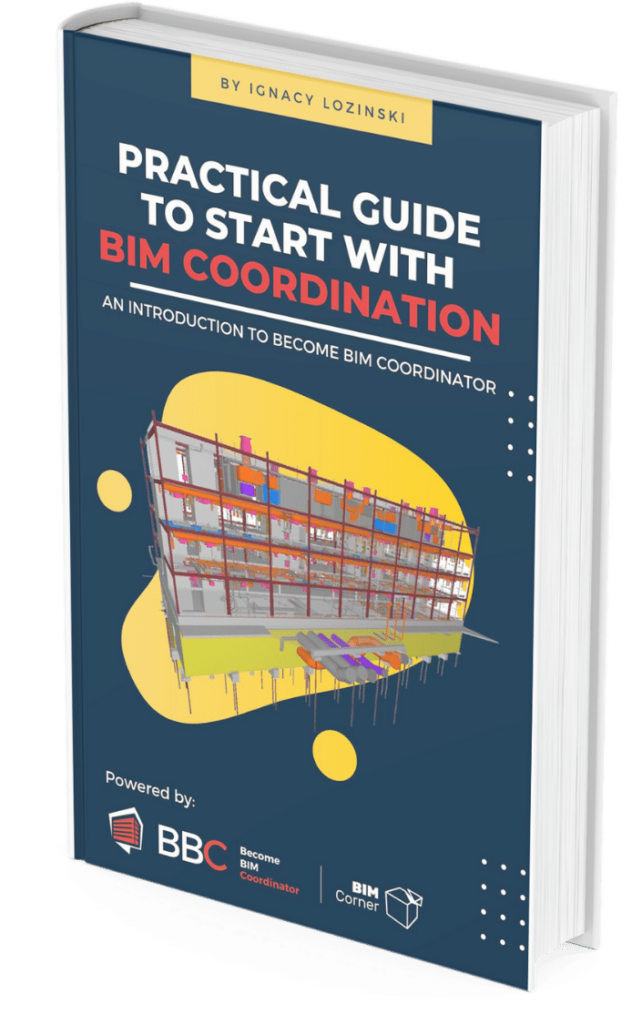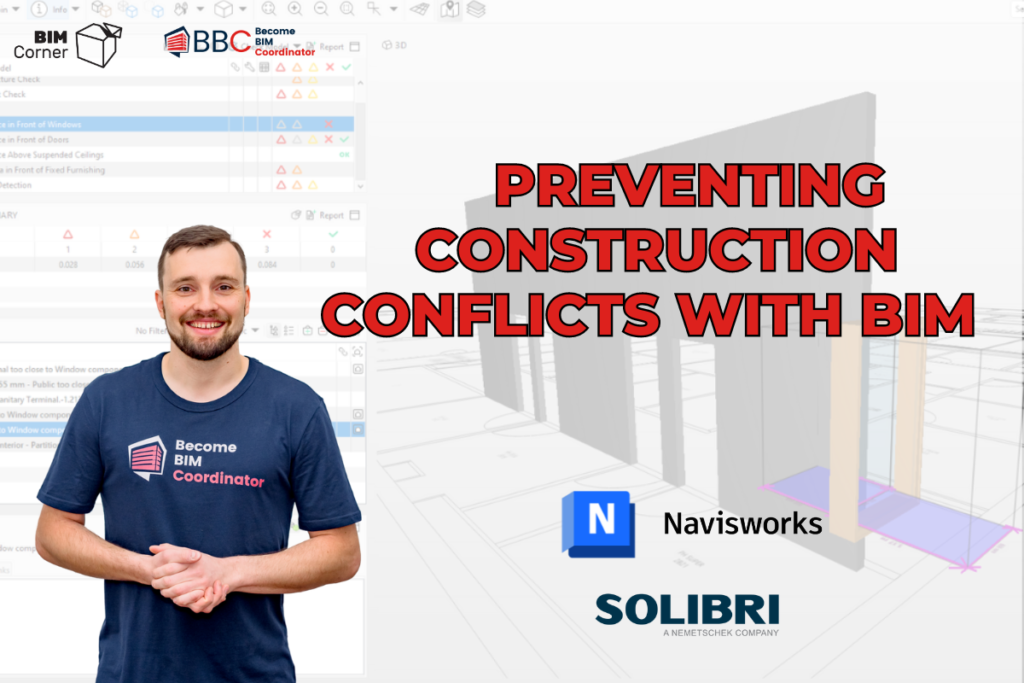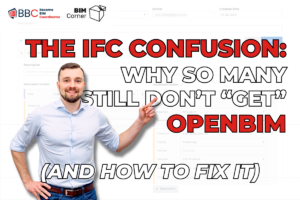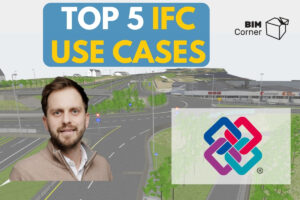BIM has been with us for a long time and constantly revolutionizes the construction and design industry. One of its most important processes is clash detection.
This process ensures that different design trade models — like those from architecture, structural, and mechanical systems—work well together before construction starts.
Effective clash detection helps prevent errors, delays, and extra costs on-site.
In this article, we’ll break down what clash detection is, the tools used to perform it, and how to make the most out of the process.
If you prefer to watch a video about that topic. Lately, I had a cool session on BIM Pure YT, where we dived into BIM Coordination and Clash Detection
Here is link to watch it:
Table of Contents
What is Clash Detection?
Clash detection involves identifying conflicts or “clashes” in a BIM model.
These clashes happen when elements from different disciplines overlap or interfere with each other. For example, a duct might intersect with a structural beam, or a pipe could run into a wall.
Detecting these issues early during the design phase allows project teams to fix them before they become expensive problems during construction.
There are three main types of clashes:
- Hard Clashes: When two elements physically overlap, like a column intersecting with a wall
- Soft Clashes: When elements are too close to each other, not meeting clearance requirements, such as equipment not having enough space for maintenance.
- Workflow or Data Clashes: When there are inconsistencies or conflicting information between teams or systems.

Why is Clash Detection Important?
Clash detection is crucial in BIM coordination because it helps teams visualize, analyze, and fix issues before construction begins.
Resolving conflicts at the design stage reduces rework, minimizes material waste, and keeps the project on time and within budget.
It ensures that various systems—mechanical, electrical, structural, and architectural — work together smoothly, leading to a more efficient and reliable construction process
Detecting clashes early also prevents costly and time-consuming adjustments on-site.
Tools for Clash Detection
Several BIM tools are available for clash detection, each with unique features. Two of the most popular tools are Navisworks and Solibri.
Navisworks
Navisworks is a powerful tool used for project review, model integration, and clash detection. It allows users to combine models from different sources and run clash tests between them. Key features include:
- Federated Models: Combine models from different disciplines (like architectural, structural, and MEP) into a single, unified model.
- Custom Clash Tests: Set up specific tests to check for hard and soft clashes by applying custom rules and filters.
- Clash Grouping: Group clashes by criteria such as system or location, making it easier to prioritize and resolve critical issues.
- Integration with Issue Management: Navisworks can integrate with platforms like Autodesk Construction Cloud or BIMcollab for efficient collaboration and issue tracking.
To get the best results from Navisworks, set up clear clash tests, prioritize clashes based on project needs, and use filters to focus on the most critical issues.
Solibri
Solibri offers a rule-based approach to clash detection, providing flexibility for quality control and model checking. It’s known for performing detailed checks on both geometry and data, ensuring models meet project standards and requirements. Key features include:
- Rule-Based Clash Detection: Define custom rules for clash detection, allowing tailored handling of project needs.
If you would like to learn more about rule-based checking – read here
- Advanced Data Validation: Check for both geometric clashes and data quality issues, such as missing or incorrect attributes.
- Clearance Checks: Check for adequate space for equipment or personnel access.
- Gatekeeper Rules: Use these to filter out irrelevant parts of the model, reducing unnecessary noise in the clash report.
Solibri is ideal for complex projects and those with strict quality and compliance requirements.
Best Practices for Effective Clash Detection
To make clash detection as effective as possible, it should be well managed and integrated into the overall BIM workflow. Here are some best practices:
- Establish Clear Coordination Protocols: Define the roles and responsibilities of each team involved in the project to ensure that everyone knows who is responsible for resolving specific issues.
- Use a Clash Matrix: Prioritize which clashes to address first based on the importance of the systems involved. For example, structural and architectural clashes might take precedence over MEP clashes.
If you would like to learn more about Clash Matrix – read here
- Create Specific Clash Tests: Avoid broad tests that generate too much data. Instead, run targeted tests that focus on critical elements, like specific zones or systems.
- Leverage Grouping and Filtering: Use tools like Navisworks or Solibri to group and filter clashes by level, system, or location, helping focus on the most important clashes first.
- Automate Where Possible: Use automation tools like Solibri Autorun or batch utilities in Navisworks to handle repetitive tasks like model updates or clash reports, saving time and ensuring regular model checks.
If you would like to learn more about automating stuff in Solibri – read here - Regularly Review and Update Models: Clash detection is not a one-time task. As models evolve, new clashes can occur, so schedule regular reviews and updates.

Interactive BIM Coordination guide full of tips, graphs, mind maps, and practical exercises. It will teach you the basics of BIM Coordination. All for free.
Conclusion
As you see, Clash detection is an invaluable process for ensuring smooth project coordination in BIM.
By catching and resolving issues early in the design phase, teams can avoid costly delays and problems on-site.
Using tools like Navisworks and Solibri, along with best practices for managing clashes, will help keep your BIM project on track and meet high standards.
If you are interested in learning more about clash detection and BIM Coordination, I encourage you to visit my site and learn more about my program 👇









